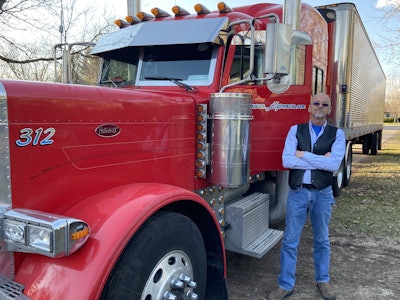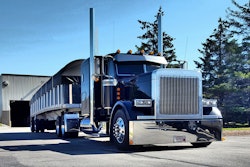This year, Overdrive has talked with dozens of owner-operators and small-fleet owners about their experiences through the COVID-19 economic downturn. We’re checking back with many of them to see how they’re faring as the economy begins climbing back.
 Two-truck owner-operator Rick Sterling has weathered the COVID-19 downturn hauling cheese for grocers and restaurants, though that mix has fluctuated more than usual due to the supply chain shocks in March and April when panic buying and restocking set in, and then as restaurant business surged as part of restocking when state shutdown orders lifted.
Two-truck owner-operator Rick Sterling has weathered the COVID-19 downturn hauling cheese for grocers and restaurants, though that mix has fluctuated more than usual due to the supply chain shocks in March and April when panic buying and restocking set in, and then as restaurant business surged as part of restocking when state shutdown orders lifted.At the onset of the COVID-19 pandemic in March and into April, beef prices plummeted, causing farmers to hang on to cattle longer than they normally would. For truckers like Dewayne Lark, who runs a six-truck cattle hauling operation, that meant a sudden halt to the normal weekly run of cattle loads.
Lark, who runs Lark Trucking out of Danville, Kentucky, was hauling around a dozen loads of cattle between Nebraska and Kentucky every week prior to the downturn, shared among himself and the six owner-operators that contract with him prior to downturn. That shrank to just a third of that — about 4 loads a week — in a matter of weeks, and cattle loads remained depressed through the end of May.
“Everything seems to be straightening out now,” said Lark earlier this month. “Things are getting back to normal.” While state shutdown orders and the pandemic itself roiled the meat industry, Lark and his other operators would take turns, working in weekly shifts so they could all at least draw some pay.
But, now, “everybody’s back to work,” said Lark. “No more swapping back and forth and taking turns.”
Likewise, owner-operator Rick Sterling, who runs the two-truck Bluegrass Express out of Oshkosh, Wisconsin, said his cheese hauling operation is mostly back to normal. Though he never hit too much of a dry spell throughout the downturn, business oscillated back and forth between his grocery loads and his restaurant accounts. In the panic buying and restocking frenzy in March and April, Sterling was busy hauling cheese loads to restock grocers and distributors.
Then, as that business tapered, states began lifting shutdown orders and restaurants were busy trying to restock on cheese. “All’s pretty good as far as I’m concerned,” said Sterling earlier this month.
He said his restaurant business lately has been “at about 125% of what it usually is,” while his grocery business has been around half of its normal run.
Neither Lark nor Sterling received any assistance from the federal government’s expansive coronavirus relief efforts. Sterling applied for the original round of Paycheck Protection Program loans, “but I didn’t try after that,” he said. “I was staying busy.”
He took a week off for vacation, but other than that, “it’s been all cheese, all the time,” said Sterling.
Comments from Lark and Sterling appeared in these stories from April and May:
See other recent check-ins with owner-operators:










